Numerical Study on the Dynamic Response of an Offshore Converter Platform with Integrated Equipment During Float-Over Installation
Abstract
1. Introduction
2. Numerical Method
2.1. Transient Dynamics Theory
2.2. Finite Element Model
2.3. Experimental Validation
2.3.1. Modal Validation
2.3.2. Dynamic Response Validation
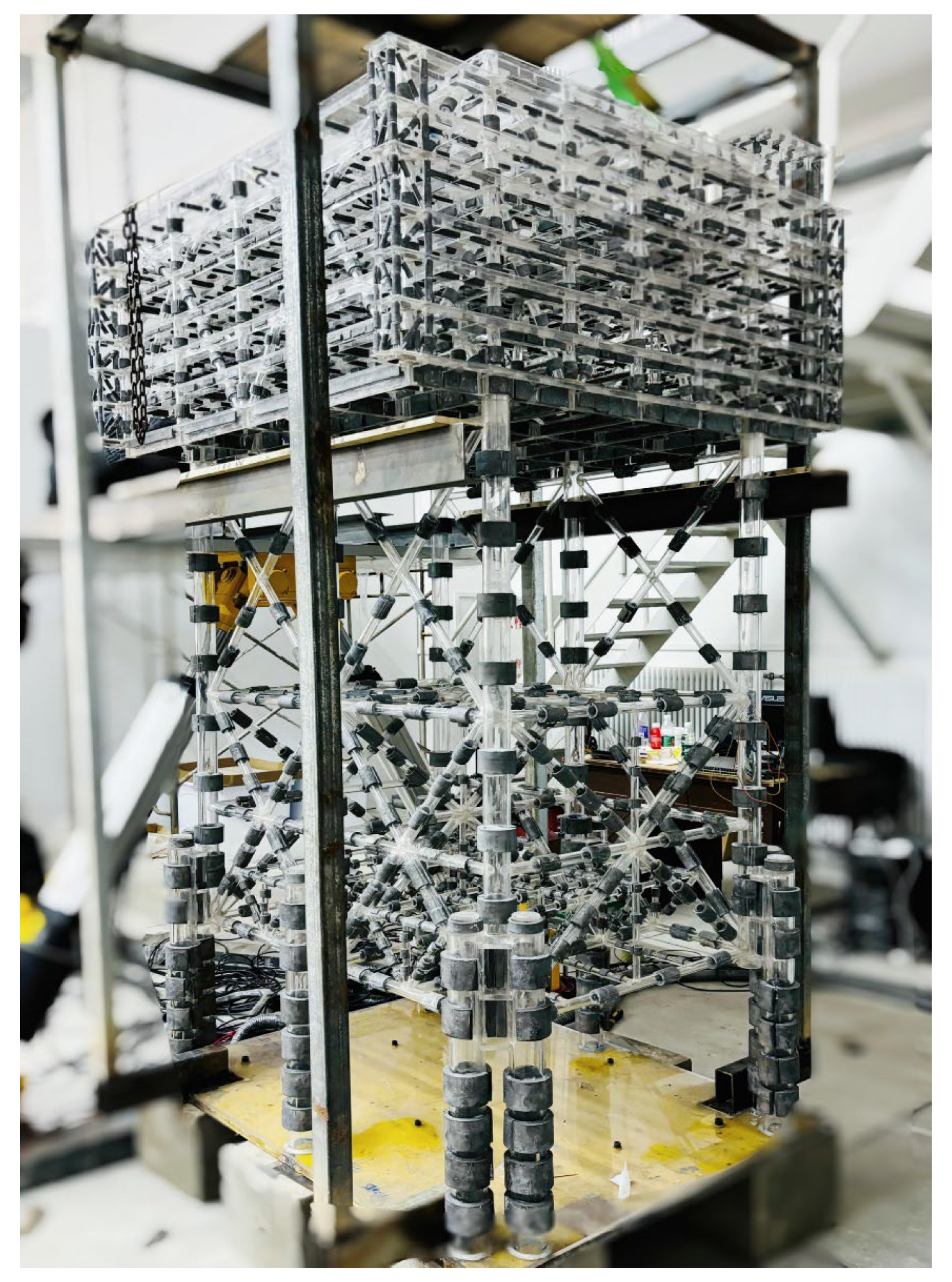

3. Results and Discussion
3.1. Dynamic Response of the Converter Valve Equipment Structure
3.2. Dynamic Response of the Topside Platform Module
3.3. Dynamic Response of the Lower Jacket Structure
4. Conclusions
- (i)
- The converter valve equipment is a bottom-fixed, slender and flexible cantilever structure. This structural feature has a significant influence on its acceleration response, but a limited effect on stress and strain. Among the three-directional accelerations of the converter valve equipment, the Z-direction acceleration response is the most prominent, and the Z-direction acceleration amplitude at the top position exceeds that at the bottom position by about 20%. Meanwhile, the Y-direction acceleration at the bottom of the converter valve equipment in the edge position is greater than that at the mid-span position. The stress and strain responses at the bottom of the converter valve equipment, where it connects with the deck, are greater than those at the top position.
- (ii)
- The platform module has a cantilever structure extending outward along the Y-direction. This structural characteristic has a significant influence on acceleration, while its effect on stress and strain is limited. The acceleration of the deck foundation beam at the edge position is about 47% higher than that of the mid-span foundation beam. Due to the arrangement of converter valve equipment on the first-layer deck foundation beam, its acceleration vibration frequency is 15% faster than that of other floors. Under comparable weight conditions, stress and strain exhibit an increasing trend with the rise in height. The Z-direction acceleration of the main column structure of the platform module is the largest, while for other column structures, the X-direction and Z-direction accelerations are close.
- (iii)
- The pile legs of the jacket structure exhibit pronounced stepwise variations in dynamic response when subjected to transient impact loads induced by contact collisions. The dynamic response of the pile legs at the mid-span position is about 25% greater than that at the edge positions, forming a non-uniform response characteristic of “strong at the mid-span and weak at the edges”. Meanwhile, as it is necessary to reserve space for barge entry to carry out float-over installation, the top of the jacket structure is formed by a Y-Z plane composed of columns and braces. This configuration results in relatively large X-direction and Y-direction accelerations of the main pile legs, reaching about half of the peak of Z-direction acceleration.
Author Contributions
Funding
Data Availability Statement
Conflicts of Interest
References
- Hong, S.; Mc Morland, J.; Zhang, H. Floating offshore wind farm installation: Challenges and opportunities—A comprehensive survey. Ocean Eng. 2024, 304, 117793. [Google Scholar] [CrossRef]
- Bi, C.-W.; Zhang, Y.-M.; Ma, C.; Cui, S.-Q. Experimental study on the hydrodynamic responses of a novel platform integrating vertical-axis wind turbine with a fish cage in regular waves. Aquacult. Eng. 2025, 111, 102585. [Google Scholar] [CrossRef]
- Tang, G.; He, Z.; Pang, H. R&D and application of voltage sourced converter based HVDC engineering technology in China. J. Mod. Power Syst. Clean Energy 2014, 2, 1–15. [Google Scholar]
- Ooi, B.T.; Wang, X. Boost-type PWM HVDC Transmission System. IEEE Trans. Power Deliv. 1991, 6, 1557–1563. [Google Scholar] [CrossRef]
- Ooi, B.T.; Wang, X. Voltage Angle Lock Loop Control of the Boost Type PWM Converter for HVDC Application. IEEE Trans. Power Electron. 1990, 5, 229–235. [Google Scholar] [CrossRef]
- Nguyen, T.H.; Quach, N.T. A Hybrid HVDC Converter Based on M2C and Diode Rectifiers Without DC Capacitors for Offshore Wind Farm Integration. Int. J. Electr. Power Energy Syst. 2021, 133, 107217. [Google Scholar] [CrossRef]
- Kim, H.S.; Jeong, C.W.; Kim, H.E. Modeling and Simulation of Modular Multilevel Converter Based-HVDC Connecting to Offshore Wind Farms. Adv. Mater. Res. 2014, 905, 421–426. [Google Scholar] [CrossRef]
- Wang, W.; Li, G.; Guo, J. Large-Scale Renewable Energy Transmission by HVDC: Challenges and Proposals. Engineering 2022, 19, 252–267. [Google Scholar] [CrossRef]
- Lan, D.; Li, J.; Chen, J.; Xu, Q. Floor response spectra of offshore electrical platform under sea waves and earthquake. Ocean Eng. 2022, 265, 112623. [Google Scholar] [CrossRef]
- Luo, H.; Liu, Q.; Bai, X.; Xie, P.; Zhang, L. Numerical and experimental investigations on dynamic response of twin-barge floatover system in standby phase. Ocean Eng. 2024, 309, 118362. [Google Scholar] [CrossRef]
- Sun, Z.Z.; Li, W.; Zhao, X.S. Simplified Method for Vibration Model of Converter Valve in Offshore HVDC Substation Based on Response Surface. Front. Energy Res. 2022, 10, 909377. [Google Scholar] [CrossRef]
- Karpenko, M.; Ževžikov, P.; Stosiak, M.; Skačkauskas, P.; Borucka, A.; Delembovskyi, M. Vibration Research on Centrifugal Loop Dryer Machines Used in Plastic Recycling Processes. Machines 2024, 12, 29. [Google Scholar] [CrossRef]
- O’Neill, L.A.; Fakas, E.; Cassidy, M. A Novel Application of Constrained NewWave Theory for Floatover Deck Installations. In Proceedings of the ASME 23rd International Conference on Offshore Mechanics & Arctic Engineering (OMAE), Vancouver, BC, Canada, 22 December 2004; pp. 165–174. [Google Scholar]
- O’Neill, L.A.; Pinna, R.; Fakas, E.; Walsh, T. Floatover Deck Installation: Case Study—Structural Efficiency of Longitudinally and Transversely-Recessed Structures. In Proceedings of the OMAE, Vancouver, BC, Canada, 1 January 2004. [Google Scholar]
- Ji, C.; Halkyard, J. Spar Deck Float-Over Feasibility Study for West Africa Environment Condition. In Proceedings of the OMAE, Hamburg, Germany, 4–9 June 2006; pp. 151–159. [Google Scholar]
- Berhault, C.; Gubrin, P.; Foulhoux, L. Optimization of an Integrated Deck Installation Process Using a Fully Coupled Hydrostructures Time Domain Analysis. In Proceedings of the Offshore Technology Conference, Houston, TX, USA, 4–7 May 1998. [Google Scholar]
- Hu, Z.; Li, X.; Zhao, W.; Wu, X. Nonlinear Dynamics and Impact Load in Float-over Installation. Appl. Ocean Res. 2017, 65, 60–78. [Google Scholar] [CrossRef]
- Chen, M.; Zou, M.; Zhu, L.; Li, L.; Sagrilo, L. A fully coupled time domain model capturing nonlinear dynamics of float-over deck installation. Ocean Eng. 2024, 293, 116721. [Google Scholar] [CrossRef]
- Zhou, Z.; Wang, H.; Zhang, B.; Zheng, Z.; Chang, Z. Multibody dynamic analysis of float-over installation based on active multi-dimensional motion compensation equipment. Ocean Eng. 2023, 285, 115330. [Google Scholar] [CrossRef]
- Lan, D.; Li, J.; Xu, Q.; Chen, J. Influence of the offshore electrical platform on the dynamic responses of converter valve under sea waves and earthquakes. Ships Offshore Struct. 2022, 17, 2531–2544. [Google Scholar] [CrossRef]
- Zhao, S.; Meng, X.; Gao, Z.; Li, H. Numerical modeling of nonstationary hydrodynamic forces and induced motions of a coupled offshore floating installation system. Ocean Eng. 2022, 246, 110618. [Google Scholar] [CrossRef]
- Chen, M.; Ouyang, M.; Li, T.; Zou, M.; Ye, J.; Tian, X. Numerical modelling of a catamaran float-over deck installation for a Spar platform with complex hydrodynamic interactions and mechanical couplings. Ocean Eng. 2023, 287, 115905. [Google Scholar] [CrossRef]
- Wang, R.; Shi, Q.; Tian, X.; Guo, X.; Li, X.; Yang, J. Dynamic responses of a twin-DP-barge float-over installation system with flexible connections. J. Ocean Eng. Sci. 2025, 10, 353–365. [Google Scholar] [CrossRef]
- Ullah, N.; Manderson, P.; Li, L.; Johanning, L. Coupled numerical model for the nonlinear dynamics of a floating installation system with suspended payload. Ships Offshore Struct. 2024, 19, 1979–1995. [Google Scholar] [CrossRef]
- Luo, H.; Zhang, L.; Liu, F.; Qin, L.; Bai, X. Numerical analysis on coupling dynamic response of twin barge–topside float-over during load transfer stage in beam waves. Int. J. Offshore Polar Eng. 2024, 34, 138–145. [Google Scholar] [CrossRef]
- Chen, M.; Taylor, E.R.; Choo, S.Y. Investigation of the Complex Dynamics of Float-Over Deck Installation Based on a Coupled Heave-Roll-Pitch Impact Model. Ocean Eng. 2017, 137, 262–275. [Google Scholar] [CrossRef]
- Wang, K.; Luo, K.; Tian, Q. Nonsmooth Model Order Reduction for Transient Tire–Road Dynamics of Frictional Contact with ALE Formulations. Nonlinear Dyn. 2024, 112, 18847–18868. [Google Scholar] [CrossRef]
- Tao, W.; Sun, J.; Wang, S.; Che, J.; Wei, Y. Hybrid Laplace-time domain model for coupled dynamic analysis of multibody mating system in topside float-over installations. Ocean Eng. 2025, 316, 119918. [Google Scholar] [CrossRef]
- Zhao, S.; Meng, X.; Li, H.; Li, D.; Fu, Q. Continuous multi-body dynamic analysis of float-over deck installation with rapid load transfer technique in open waters. Ocean Eng. 2021, 224, 108729. [Google Scholar] [CrossRef]
- Gao, L.; Zhu, T.; Lin, B. Similarity Techniques in Structural Dynamic Model Testing. J. Dalian Univ. Technol. 2000, 40, 1–8. [Google Scholar]
- Zhu, T. Similarity Issues in Structural Dynamic Models and Structural Dynamic Testing Techniques. Ph.D. Thesis, Dalian University of Technology, Dalian, China, 2004. [Google Scholar]
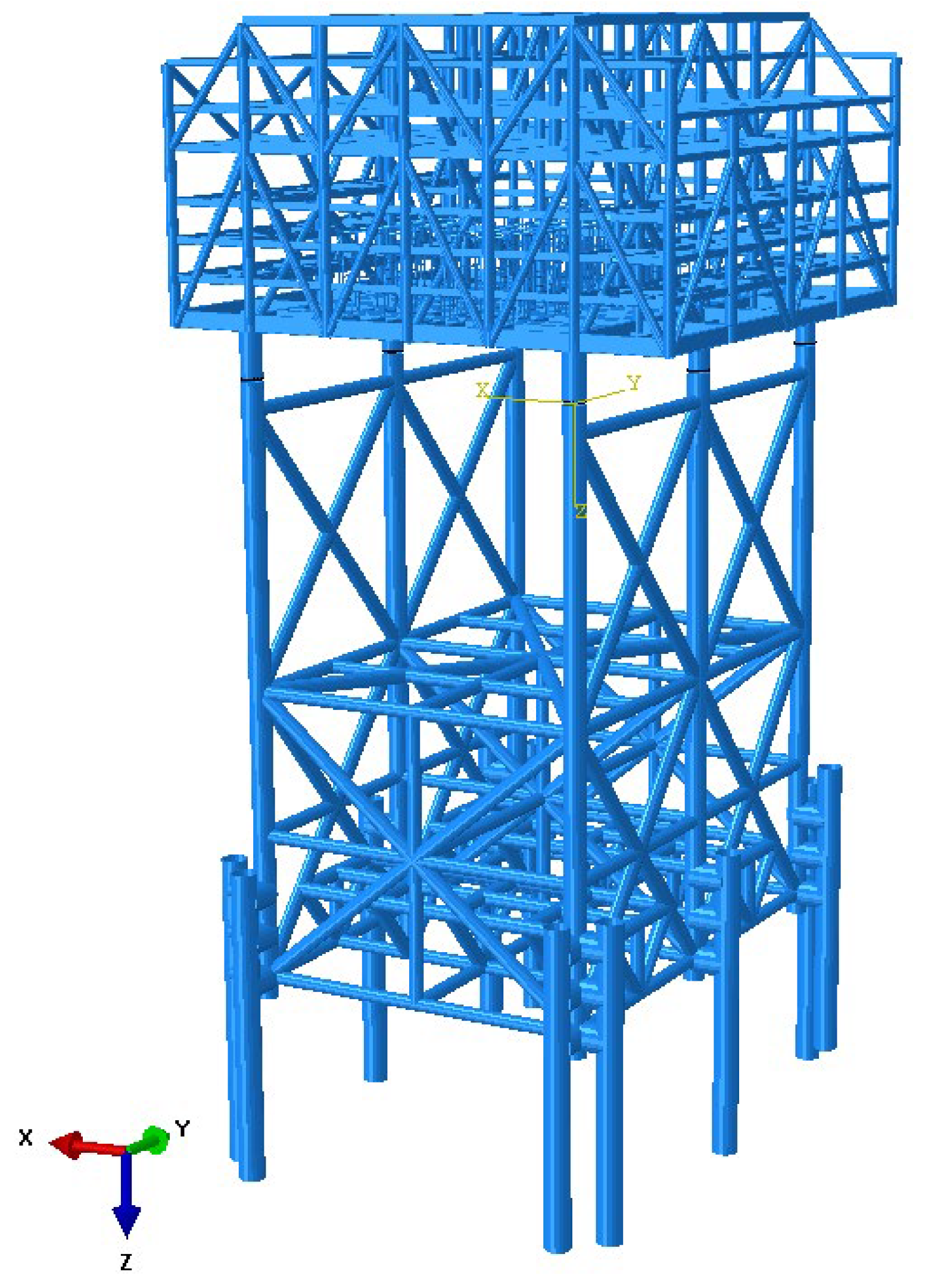
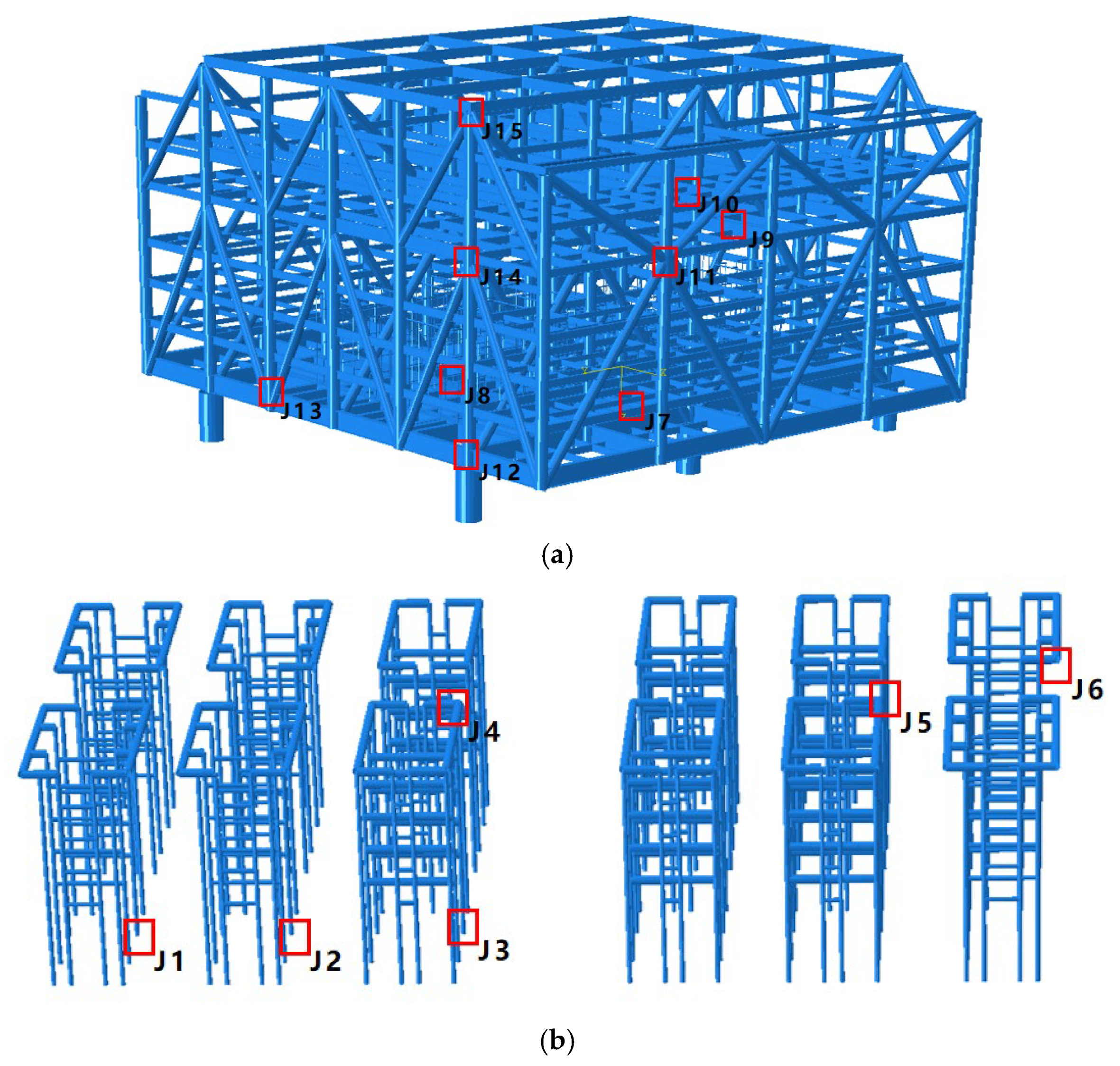

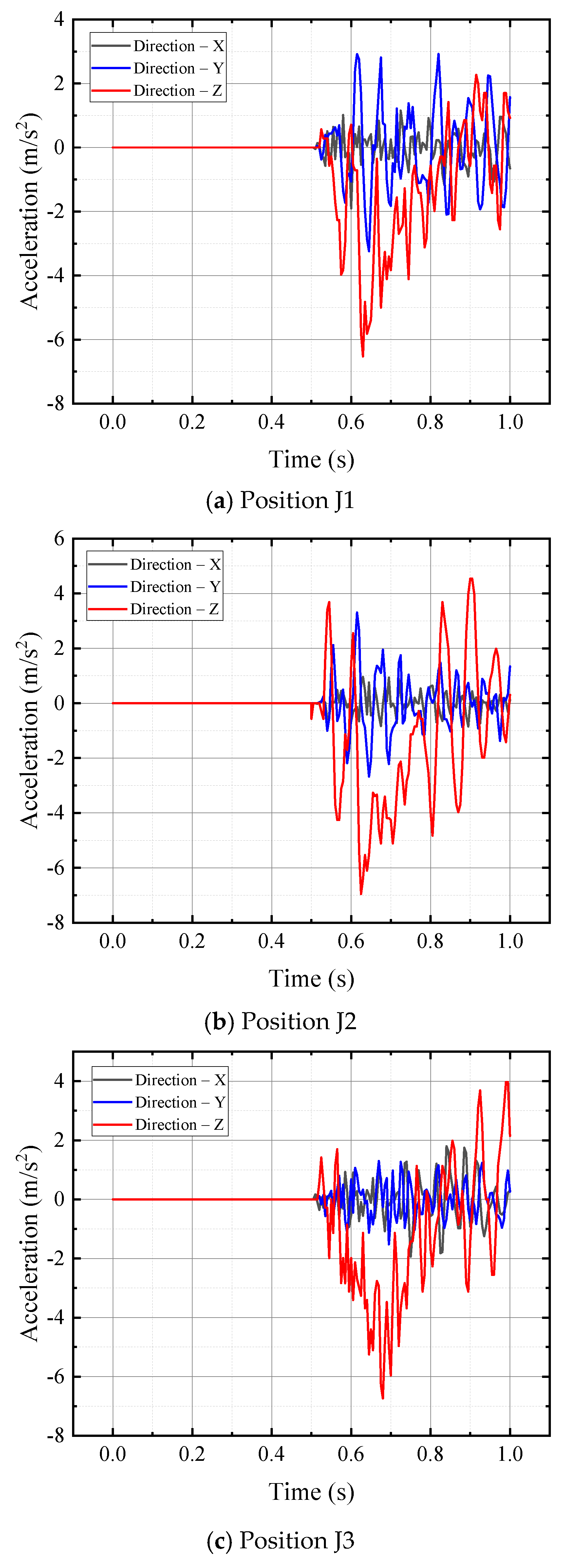


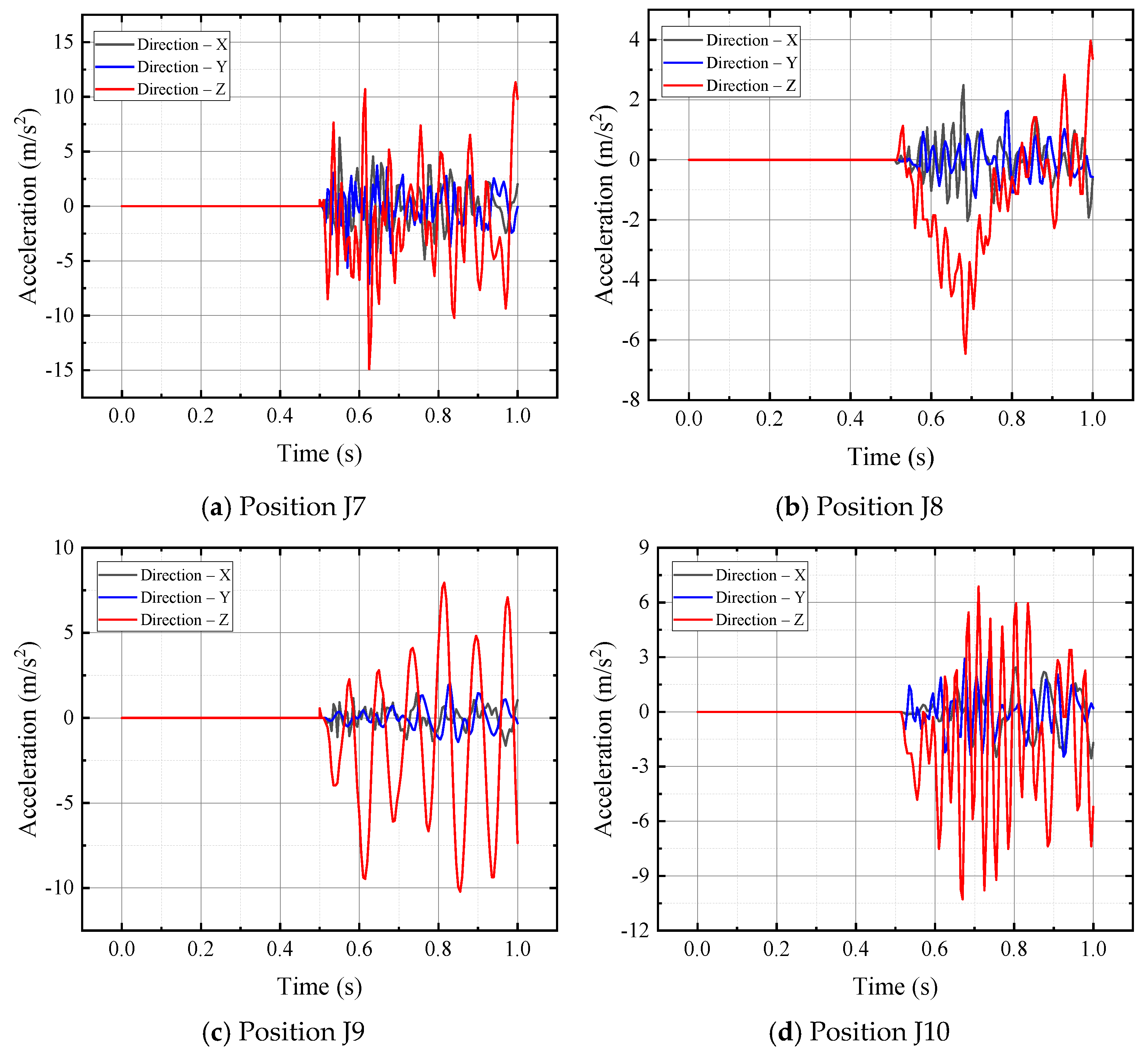

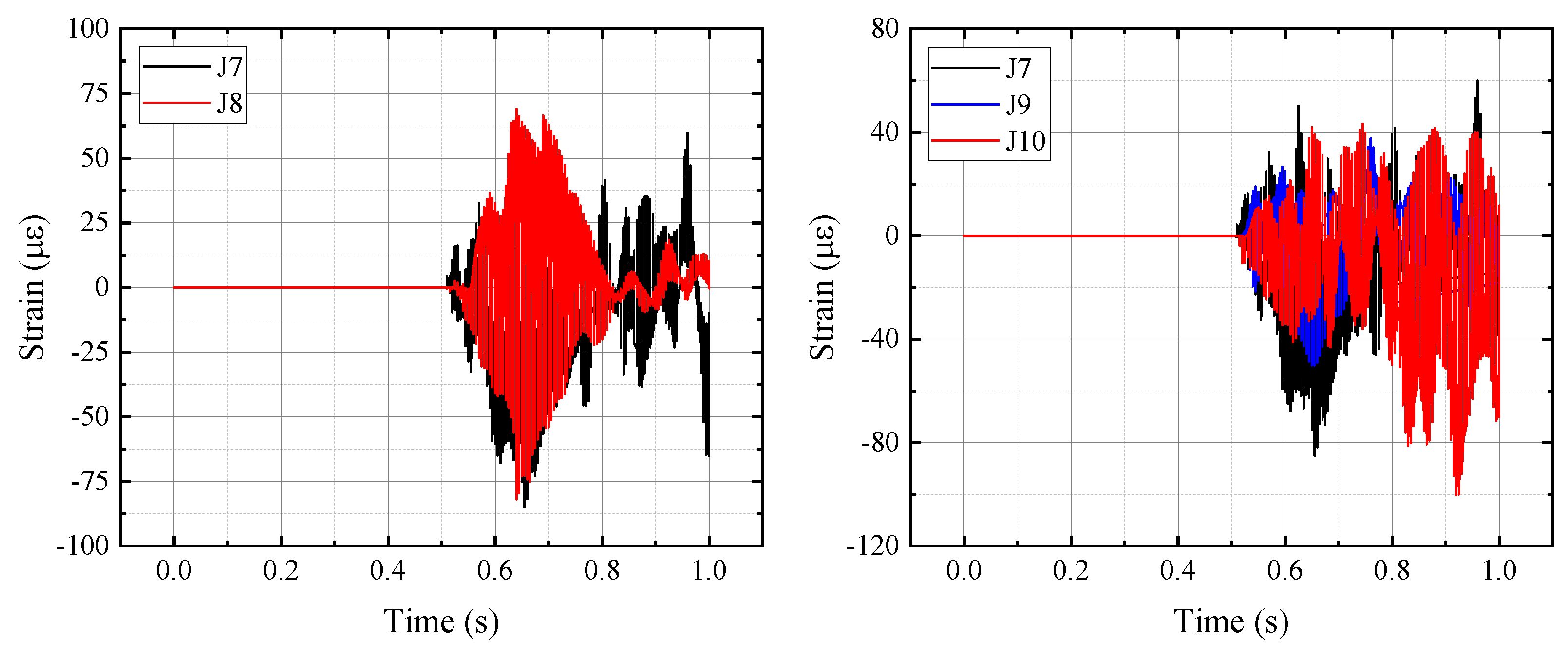
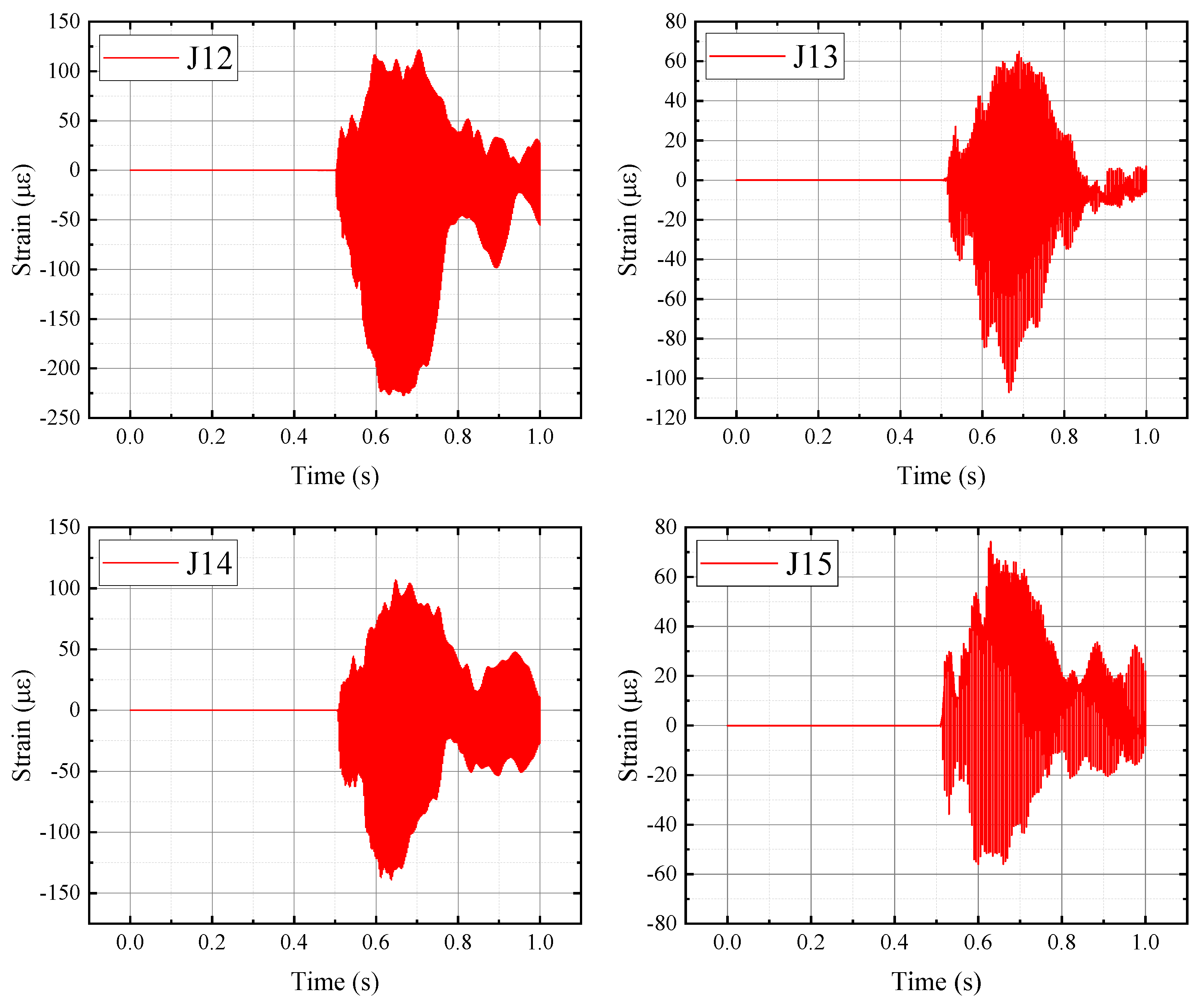
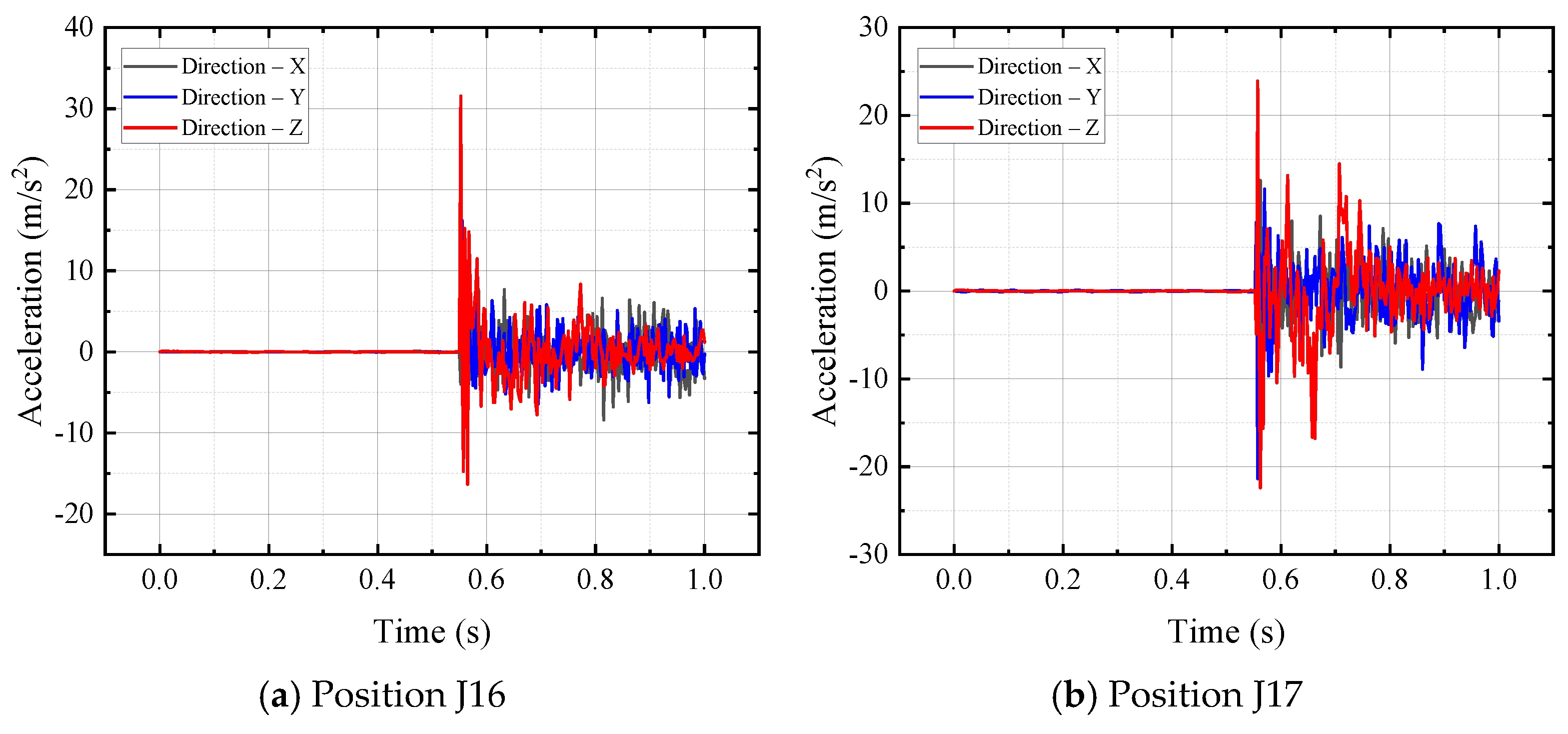
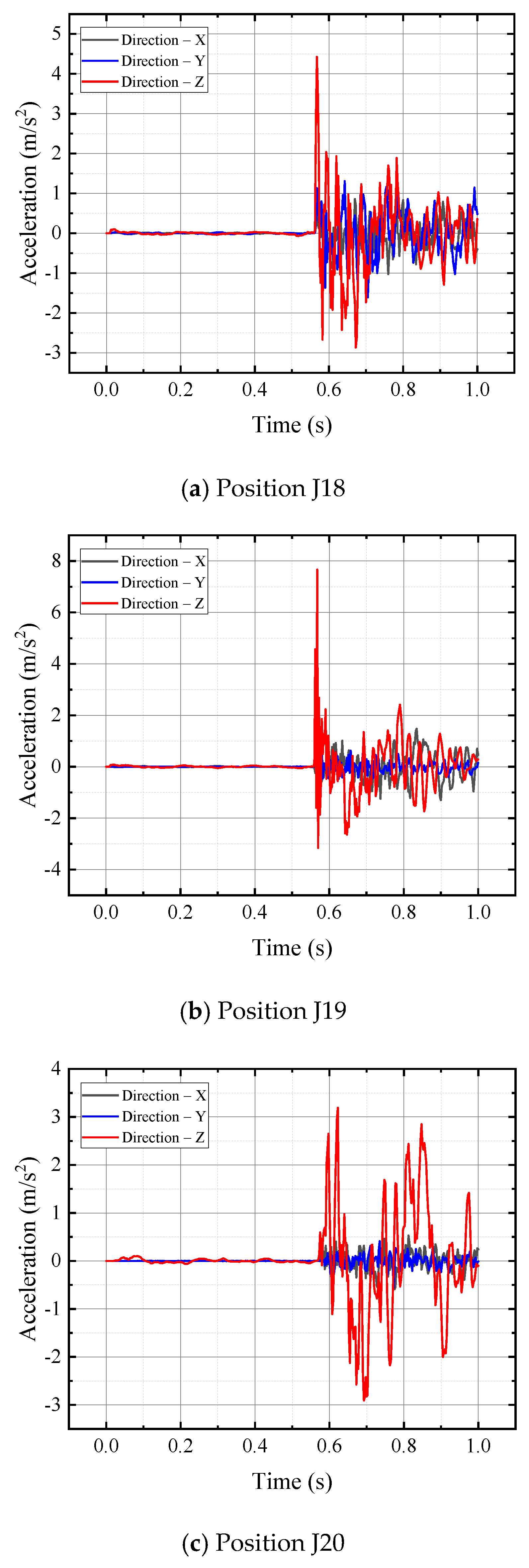
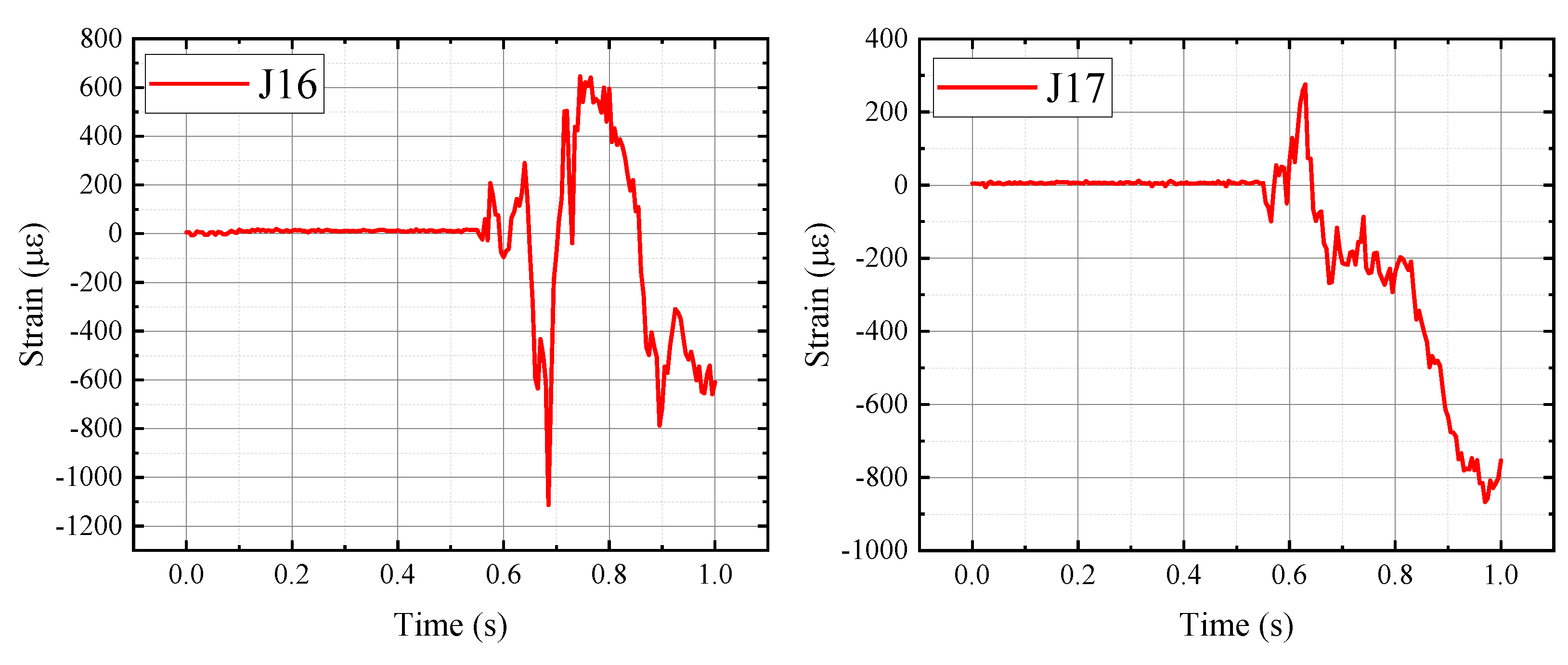
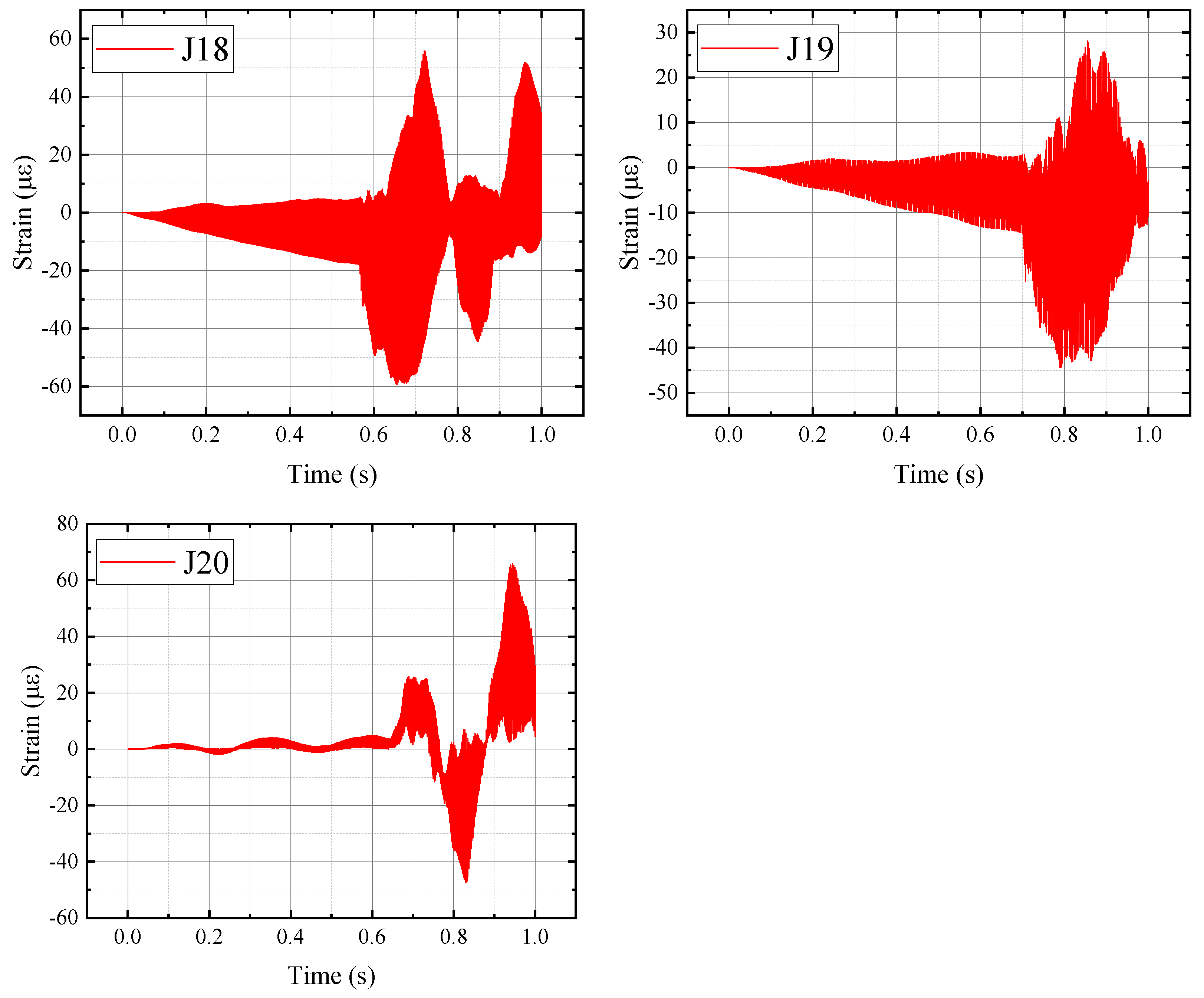
Disclaimer/Publisher’s Note: The statements, opinions and data contained in all publications are solely those of the individual author(s) and contributor(s) and not of MDPI and/or the editor(s). MDPI and/or the editor(s) disclaim responsibility for any injury to people or property resulting from any ideas, methods, instructions or products referred to in the content. |
© 2025 by the authors. Licensee MDPI, Basel, Switzerland. This article is an open access article distributed under the terms and conditions of the Creative Commons Attribution (CC BY) license (https://creativecommons.org/licenses/by/4.0/).
Share and Cite
Jiang, Z.; Wu, W.; Wang, T.; Sun, Z.; Zhang, B.; Dong, G.; Bi, C. Numerical Study on the Dynamic Response of an Offshore Converter Platform with Integrated Equipment During Float-Over Installation. Energies 2025, 18, 5656. https://doi.org/10.3390/en18215656
Jiang Z, Wu W, Wang T, Sun Z, Zhang B, Dong G, Bi C. Numerical Study on the Dynamic Response of an Offshore Converter Platform with Integrated Equipment During Float-Over Installation. Energies. 2025; 18(21):5656. https://doi.org/10.3390/en18215656
Chicago/Turabian StyleJiang, Zhenqiang, Weiwei Wu, Tianchai Wang, Zhenzhou Sun, Bo Zhang, Guohai Dong, and Chunwei Bi. 2025. "Numerical Study on the Dynamic Response of an Offshore Converter Platform with Integrated Equipment During Float-Over Installation" Energies 18, no. 21: 5656. https://doi.org/10.3390/en18215656
APA StyleJiang, Z., Wu, W., Wang, T., Sun, Z., Zhang, B., Dong, G., & Bi, C. (2025). Numerical Study on the Dynamic Response of an Offshore Converter Platform with Integrated Equipment During Float-Over Installation. Energies, 18(21), 5656. https://doi.org/10.3390/en18215656




